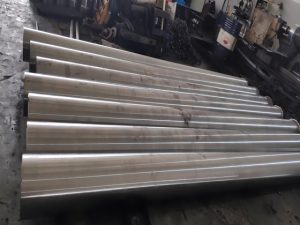Stainless steel bars are made from stainless steel ingots that are hot rolled or forged.
Stainless steel bars are usually expressed in diameter and have a wide range of applications, including petroleum, electronics, chemicals, medicine, textiles, food, machinery, construction, nuclear power, aerospace and military industries.
The size of stainless steel round bars usually ranges from 1.0 mm to 250 mm, and the production process can be divided into three types: hot rolling, forging and cold drawing.
On February 15, 2024, the US International Trade Commission (USITC) determined that canceling the existing anti-dumping (AD) order on stainless steel bars from India would likely lead to the continuation or recurrence of material injury to the US industry within a reasonably foreseeable time.
Due to the USITC’s affirmative determination, the existing AD order on imports of subject goods from India will be maintained.
This sunset review was initiated on September 1, 2023
Stainless steel round bars include but are not limited to the following types:
316L Stainless Steel Round Rod
This stainless steel contains molybdenum and is low in carbon, giving it excellent resistance to pitting corrosion in marine and chemical industry environments.
304L stainless steel round rod
As a low-carbon 304 steel, its corrosion resistance is similar to 304. After welding or stress relief, it has excellent resistance to intergranular corrosion and can maintain good corrosion resistance without heat treatment.
302 stainless steel round rod
It widely used in auto parts, aviation, aerospace hardware tools and chemical industry.
301 stainless steel round rod
It has good ductility, suitable for molded products.
200 series stainless steel round bars
202 stainless steel round bars (performance better than 201) and 201 stainless steel round bars (belonging to chromium-nickel-manganese austenitic stainless steel with lower magnetism).
400 series stainless steel round bars
410 stainless steel round bars (high-strength chromium steel, good wear resistance but poor corrosion resistance)
420 stainless steel round bars (“cutting tool grade” martensitic steel) and 430 stainless steel round bars (iron Solid stainless steel for decoration).
Stainless steel rods can be divided into three types according to production technology: hot rolling, forging and cold drawing.
The specifications of hot rolled stainless steel round bars are 5.5-250 mm
The difference between hot rolled stainless bars and cold rolled stainless steel bars
Hot-rolled and cold-rolled stainless steel round bars are two different production processes.
The specific differences are as follows:
The manufacturing process of hot-rolled stainless steel round bars includes three steps: heating, rolling and cooling.
Cold-rolled stainless steel round bars do not need to be heated, but they need to be pickled and annealed.
The surface of hot-rolled stainless steel round bars is relatively rough, has an obvious metallic texture, and may have oxidation color.
The cold-rolled stainless steel round bars have a smooth surface, no obvious oxidation color, and better quality and appearance.
Hot-rolled stainless steel round bars have good toughness and ductility, and are suitable for occasions that need to withstand greater pressure or bending.
Cold-rolled stainless steel round bars have higher hardness and strength and are suitable for applications requiring higher wear resistance and corrosion resistance.
Hot-rolled stainless steel round bars are mainly used in construction, machinery, chemical industry and other fields, such as pipes, containers, structural parts, etc.
Cold-rolled stainless steel round bars are mainly used in home appliances, automobiles, electronic products and other fields, such as electronic components, auto parts, kitchen utensils, etc.
The hot-rolled and forged stainless steel rods with dimensions (diameter, side length, thickness or distance between opposite sides) not greater than 250mm.
Stainless steel rod materials: 304, 304L, 321, 316, 316L, 310S, 630, 1Cr13, 2Cr13, 3Cr13, 1Cr17Ni2, duplex steel, antibacterial steel and other materials!
The specifications of stainless steel bars are usually expressed in diameter.
Common specifications are: diameter 10mm, 12mm, 16mm, 20mm, 25mm, 30mm, 35mm, 40mm, 45mm, 50mm, 55mm, 60mm, 65mm, 70mm, 75mm, 80mm, 85mm , 90mm, 95mm, 100mm, 110mm, 120mm, 130mm, 140mm, 150mm, 160mm, 170mm, 180mm, 190mm, 200mm, 220mm, 240mm, 250mm, 260mm, 280mm and 300mm, etc.
National standard for stainless steel bars: GB/T14975-2002, GB/T14976-2002, GB/T13296-91
American standards: ASTM A484/A484M, ASTM A213/213A, ASTM A269/269M
Post time: Feb-25-2024



